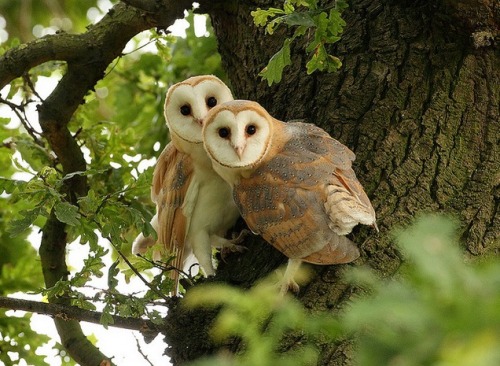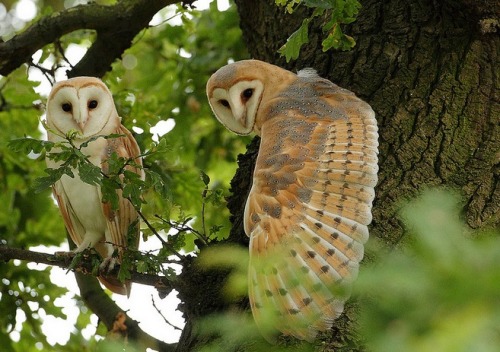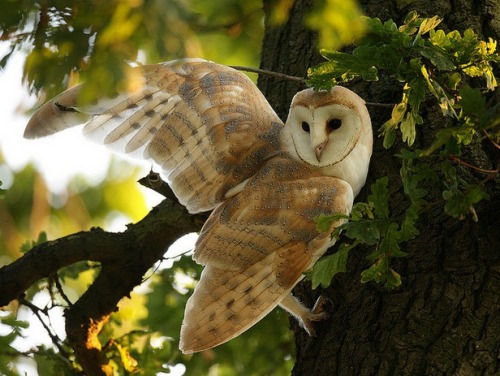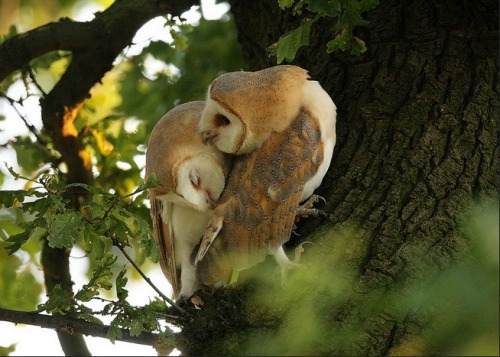Slavic Folk Charm That I Have Twofold Love For: If A Young Girl Desires To Have Long, Strong And Thick
slavic folk charm that I have twofold love for: if a young girl desires to have long, strong and thick hair, she should go into the forest or go into the field, and among the rocks find snake’s shedded skin - take it, and boil it, and with that concoction wash her hair.
but beware, as her hair shall truly be like a snake - and should she forget to be cautious, it will coil around her neck and choke out her last young breath.
More Posts from Saintedsorcery and Others
TIL that Aleister Crowley literally told people that he was the Beast from Revelations and all I could think about is how easily I could picture him as a controversial youtuber/tiktokker.

Agrippa ~ Of the seals, and characters of natural things.
Everything therefore hath its character pressed upon it by its star for some peculiar effect, especially by that star which doth principally govern it: and these characters contain, and retain in them the peculiar natures, virtues and roots of their stars ….
The Herbs of Saint John
Before sunrise this morning I went out and took part in my first bit of French-Canadian folk magic (ie Sorcellerie). Since I’m really bad at timing things properly and planning ahead it was a little haphazard but overall I’m proud of myself for connecting with my ancestry.
I’ll provide links below but the quick and easy rundown is this: herbs are most magically potent on Saint John’s Eve and must be gathered between midnight and sunrise on Saint John’s feast day (June 24th). The herbs vary from place to place except for Mugwort (which sadly I haven’t found near my home), but I did find that yarrow grows in my yard which I find very exciting. The herbs must also be protected from sunlight for 24 hours before being dried and stored/used. If any of the herbs I’ve gathered this year remain by next Saint John’s Eve they must be discarded because they will have lost all power.
As I said before I harvested Yarrow from my yard but I was also able to gather some Bittersweet Nightshade, which for me has a special connection to The Great Earth-Indweller.
I added some Fayerieism flare to the gathering by performing a Plant Swaying Charm over both plants that I harvested from.
Blessings to you all



*the lighting is my porch light*

“In Nomine Babalon” #witch #traditionalwitchcraft #pagan #paganism #goddess #babalon #folkwitch #rosary #prayerbeads #cunningwoman #sorcery #devotion #deity #deitywork #spiritwork https://www.instagram.com/p/Cio1IXtO4cp/?igshid=NGJjMDIxMWI=
Little things I've picked up
When blowing out candles, if I have trouble blowing them out, it usually means I'm not finished yet
Offering homemade goods is a surefire ancestor pleaser
Let nature help you create. Ask kindly for supplies, and you will receive
It's okay to take breaks. Recharging your metaphorical batteries allows your brain to processes the knowledge it's learned and integrates it into your system
While getting caught up in aesthetics can make your craft vapid, they play a role. Making yourself look fearsome to ward off "evil" spirits is an incredibly old tradition that spans many cultures. Aesthetics matter. But don't get lost in them
Like becomes like. The more I find myself gathering from the pine forests and leaving offerings for the land wights, the more I find myself becoming like the land. If you do the same, you'll find the same. And embracing this will embolden the power you hold over your craft
Whistle. Whistle to everything. To the birds, to the trees, to the bugs and the leaves. Whistle. And if you can't whistle, hum. Just make sure you take caution if you hear a whistle back.
Taking control can be hard. But you need to assert yourself. Stomp on your ground. Breathe deeply. Affirm your presence. You are a metaphysical lightbulb, and deciding how brightly you shine depends on where you plug yourself into. Be bright when needed. And dim when necessary
The most common trees in your area will be your best friends. Learn of them. Commune with them. Hug them
Bones. That's it. Bones
And always remember to use critical thinking skills and discernment. Be open, but be critical. Make sure you're not deluding yourself





{Barn Owls in The Oak} by {Mike Rae}


Join me on my journey to finally unbalance my hormones, toxify my body, boost my inflammation, maximize my cortisol and absolutely destroy my gut health.





The book says that these are talismans that are meant to be re drawn on paper and carried with you to give the you these abilities.
The Book of Oberon
Heresy As Healing

When I first got into paganism and witchcraft, I did what I think a lot of people do and took a very hard turn in to “fuck Christianity!” The literature and discourse of the early and mid 2000′s didn't help this mindset either. There was a lot of talk about how Wicca (I was an eclectic wiccan at the time) was the survival of an ancient pre-Christian religion and that Christianity stole its practices, holidays, and pretty much everything else, from paganism.
Needless to say my religious baggage went unpacked for YEARS?
That was until i left my more Wicca-inspired practice and found “traditional witchcraft”. In these spaces i found something that i had been lead to believe was impossible: Witchcraft and Christianity coexisting. Not only coexisting, but a style of witchcraft created by almost biblical teachings on their heads and pulling out the magic. Lucifer and Azaezel being sources of witch-power, Cain being the first Sorcerer, the witch’s horned one as the Devil! Seeing the witch-trials as not simply a tragedy, but pulling wisdom and magic from the confessions. All of this was new and exciting!
Beginning my research into this amazing new avenue was the first step in healing my heart and soul from the hitherto ignored scars left by my time in the Church. The more I walked this strange and crooked path, the more I found value in heresy. Calling to the Man in Black at a crossroads, flying from my body to the Witch’s Sabbath, reciting the Lord’s Prayer backwards. All of these were powerful in ways I never thought they could be. I laughed at myself. If you had told me at 18 that in 5 years id be dancing with the Devil, I would have raged about there being no Devil in the Craft. While I understand now why the 90s-2000s were so “anti-devil” and “love and light” I’m glad that we can now look at witchcraft and its history with a more nuanced lens.
Now in some ways I've come full circle. I am not a Christian, and I don't think i ever will be, but I pray to saints, I have a growing interest in Mary, I use psalms and bible verses in my spell work, i craft rosaries as a devotional act to the spirits I serve and honour. My patron goddess has even started to come to me with Marian imagery and titles.
In Fayerie Traditionalism/Fayerism we’re encouraged (sometimes outright told) to avoid and expunge all Abrahamism from our lives and certainly from our Sorcery. We’re told that there is no magic or value in Abrahamic traditions. This has been my biggest hurdle with this path. For me, i find so much power in using folk magic that would be deemed “witchcraft” by the Church, regardless of how much scripture is in it. I think to continue this idea of “there's no place for Christianity in witchcraft” does such a disservice to the history of witchcraft in Europe and the US. So many practices would not exist if our ancestors had not learned to synchronize and hide in plain site. I’m not calling on God when I use a psalm to heal, I'm speaking words of power that have been spoken for centuries by other healers and workers. When I pray the rosary, I do it to honor my ancestors who found comfort in it.
For me, the catholic folk magic and heretical aesthetics do not deter me from path of Fayerie Traditionalism, it is simply another avenue to the same goal. The spirits of this tradition have not shown any ill-will to how I work. Gwynn still comes when I call him “Devil” or “Master” and Gwynnevar herself told me to call her “Our Lady Down Below” or “Our Lady of the Mound/Hill” Taking back my power from Christianity and seeing the Wisdom in its heresy has made me a better person and a stronger sorcerer. I have not lost my faith in the Fayerie People but have come closer to them.
All this is to say:
Be free
Be powerful
Be a Heretic
Nema
"[A theme of sacrifice can] be found in folk traditions relating to the scarecrow as the spirit of the harvest or corn king. In several English counties the scarecrow was known as a mawkin, an old dialect name for a ghost or ghoul. In Yorkshire, Warwickshire and Devon it was called a mummet or mommet meaning a spirit that walks at night. In Old Cornish a bucca can refer to a scarecrow, ghost or goblin and in northern England and Scotland it was known as a tatty-bogle. Tatty means potato and bogle is derived from bogey meaning any evil spirit or malicious faery, hence the bogeyman used to scare naughty children.
In Shakespeare's play The Merry Wives of Windsor the scarecrow is called a Jackalent or Jack of Lent. This refers to the old and rather curious custom of pelting any stranger visiting the area with sticks and stones. By the 19th century a puppet or scarecrow had replaced a human victim. It was beaten with sticks in a folk ritual to increase the fertility of the fields and ensure there was a good harvest. Originally the mawkin was the name for a bundle of rags on a stick used to clean out bakery ovens. After use it was placed in the fields to symbolically promote the growth of the grain used to bake the bread. When it was windy the rags fluttered in the breeze and were seen to scare off crows and other birds attacking the new crops.
Sometimes in the old days a man desperate for any work was hired to be a human scarecrow and stand all day in the field warding off the birds. Some folklorists trace this custom and indeed the origin of the scarecrow back to human sacrifices in pagan times to protect the crops and livestock from disease and bring a fertile harvest. In this respect it could be a more socially acceptable and civilised substitute for the divine king ritually murdered so his blood fertilised the land.
Dr Jacqueline Simpson of the Folklore Society believes the scarecrow may have originated in the ugly or aggressive effigies once placed in the fields to drive away evil spirits. She has linked them to the puppets in European folk customs that were destroyed in spring fertility rites as symbolic representations of winter and death. After the coming of Christianity, farmers in Brittany in northern France placed a life-sized wooden image of the crucified Jesus in the fields instead of these puppets, as they believed it would produce a good harvest.
Everywhere in folklore there is evidence of the association of scarecrows with the supernatural, ghosts and the spirits of the dead. In North America there was a folk belief that scarecrows came alive on the night of Hallowe'en (October 31st) and roamed the countryside. The popular American author Nathaniel Hawthorne wrote a short story based on this belief, which was common knowledge in his home village of Salem, famous for its witch-trials. In the story, which is similar to the Italian fairy tale of Pinocchio, an old witch called Mother Rigby made a scarecrow from a broomstick and used a spell and a tune played on a pipe to bring it alive."
Liber Nox:
A Traditional Witch's Gramarye
Chapter 9: 'Michaelmas'
by Michael Howard
-
 amoenavirgo liked this · 4 months ago
amoenavirgo liked this · 4 months ago -
 nerdyninjakitty liked this · 9 months ago
nerdyninjakitty liked this · 9 months ago -
 vineshroud reblogged this · 9 months ago
vineshroud reblogged this · 9 months ago -
 theslavicsea reblogged this · 9 months ago
theslavicsea reblogged this · 9 months ago -
 onionsandvoid reblogged this · 9 months ago
onionsandvoid reblogged this · 9 months ago -
 fairytaleenthusiast reblogged this · 10 months ago
fairytaleenthusiast reblogged this · 10 months ago -
 maladaptivedaydreamerlala liked this · 10 months ago
maladaptivedaydreamerlala liked this · 10 months ago -
 aprilphantom liked this · 10 months ago
aprilphantom liked this · 10 months ago -
 1queerengineer liked this · 10 months ago
1queerengineer liked this · 10 months ago -
 black-rose-writings liked this · 10 months ago
black-rose-writings liked this · 10 months ago -
 tiredandlookingforinspo liked this · 10 months ago
tiredandlookingforinspo liked this · 10 months ago -
 flyingprisonalindustrialcomplex liked this · 10 months ago
flyingprisonalindustrialcomplex liked this · 10 months ago -
 floppywings-blog liked this · 10 months ago
floppywings-blog liked this · 10 months ago -
 siriuslyobsessedwithfiction liked this · 10 months ago
siriuslyobsessedwithfiction liked this · 10 months ago -
 dead-dolphins liked this · 10 months ago
dead-dolphins liked this · 10 months ago -
 stromuprisahat reblogged this · 10 months ago
stromuprisahat reblogged this · 10 months ago -
 stromuprisahat liked this · 10 months ago
stromuprisahat liked this · 10 months ago -
 gunmetalwoman liked this · 10 months ago
gunmetalwoman liked this · 10 months ago -
 ammonitetestpatterns liked this · 10 months ago
ammonitetestpatterns liked this · 10 months ago -
 unfading-scrutiny liked this · 10 months ago
unfading-scrutiny liked this · 10 months ago -
 bloodiedpunk liked this · 10 months ago
bloodiedpunk liked this · 10 months ago -
 eleusinian-kitten liked this · 10 months ago
eleusinian-kitten liked this · 10 months ago -
 thecumdaddy liked this · 10 months ago
thecumdaddy liked this · 10 months ago -
 lorelaisdiary liked this · 10 months ago
lorelaisdiary liked this · 10 months ago -
 k1ttenblood reblogged this · 10 months ago
k1ttenblood reblogged this · 10 months ago -
 placeofsilence liked this · 10 months ago
placeofsilence liked this · 10 months ago -
 boyczar reblogged this · 10 months ago
boyczar reblogged this · 10 months ago -
 javob liked this · 10 months ago
javob liked this · 10 months ago -
 dirbyjuliaducournau liked this · 10 months ago
dirbyjuliaducournau liked this · 10 months ago -
 orchidmilk reblogged this · 10 months ago
orchidmilk reblogged this · 10 months ago -
 sugartear liked this · 10 months ago
sugartear liked this · 10 months ago -
 intranara reblogged this · 10 months ago
intranara reblogged this · 10 months ago -
 novemb-r liked this · 10 months ago
novemb-r liked this · 10 months ago -
 eyelashwish reblogged this · 10 months ago
eyelashwish reblogged this · 10 months ago -
 literatureinfurs liked this · 10 months ago
literatureinfurs liked this · 10 months ago -
 edenunderfallout liked this · 10 months ago
edenunderfallout liked this · 10 months ago -
 catalina387 liked this · 10 months ago
catalina387 liked this · 10 months ago -
 zenithpendragon liked this · 10 months ago
zenithpendragon liked this · 10 months ago -
 sleeppywitch reblogged this · 10 months ago
sleeppywitch reblogged this · 10 months ago -
 deificdahlia reblogged this · 10 months ago
deificdahlia reblogged this · 10 months ago -
 velvetrooftops liked this · 10 months ago
velvetrooftops liked this · 10 months ago -
 simbilmyne liked this · 10 months ago
simbilmyne liked this · 10 months ago -
 bijela-bogomoljka reblogged this · 10 months ago
bijela-bogomoljka reblogged this · 10 months ago -
 liddlelady liked this · 10 months ago
liddlelady liked this · 10 months ago -
 katoprofen liked this · 10 months ago
katoprofen liked this · 10 months ago -
 the-antlered-cryptid reblogged this · 10 months ago
the-antlered-cryptid reblogged this · 10 months ago
